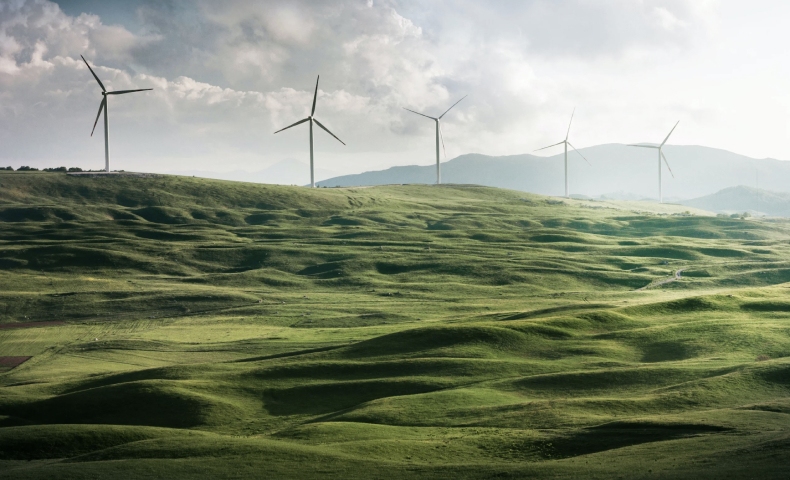Renewable energy powering the supply chain
Sergio Ferraris • Environment journalist

Sergio Ferraris • Environment journalist

“Green energy production is becoming a reality in the manufacturing industry, both for the climate and for convenience”
Sustainability and products. Or rather renewable energy and manufacturing. Energy plays a crucial role in this relationship. Because to produce anything, you need energy. This is the “hidden” energy in every product we consume: it is certainly substantial but very difficult to locate and measure. Let us use an example to reconstruct the journey of a food product. Take a piece of fruit: before reaching our fruit bowl, the product arrives at the point of sale, often packaged both for the consumer and large retail, and is placed on a refrigerated shelf, after sitting in a refrigerated wholesale store and being transported by a refrigerated vehicle. Packaging, refrigeration, storage space and vehicles consume energy both through their use and their manufacture.
And this is just one leg of the journey. Indeed, before that came transportation from the field, cultivation, preparation of the soil by mechanical means, fertilizers and irrigation, all of which consume energy which was all derived, until recently, from fossil fuels. In other words, at a high rate of CO2 emissions.
Transforming such a complex scenario is not easy. First of all, you to need in-depth understanding of the “energy network” surrounding the product. The main tool is Life Cycle Assessment (LCA) which calculates the emissions, waste and land use from seed to kitchen for units of various food products. The influence of geography on energy consumption also raises complex questions. One kilogram of soya beans, for example, may equate to 630g CO2eq when cultivated in the United States, 5,280 in Argentina and 7,410 in Brazil (source: Quantis).

However, the individual links in a product chain can make a big difference, starting with energy efficiency. An area in which Italy is excelling. Our country, historically lacking in its own energy resources and raw materials, is among the best in the world in terms of product cycle. Italy uses 2.5 MJ per dollar of GDP produced, compared with 2.8 in Germany (source: Irena) and of this Italian primary energy, 17.1% is renewable.
The equivalent figure for Germany falls short at 15.8%. This is because, despite the fact that energy in Italy has always been expensive, we have a strong tradition of systems engineering in this field and companies have even “taken advantage” of energy efficiency by using it to create market leverage.
As early as 2005, Pasquale Pistorio, the then President of microchip producer STMicroelectronics, cut the energy required to produce a single unit of product by 5%, saving 130 million dollars (Source: QualEnergia). Today, Pistorio’s approach has spread like wildfire. Manufacturers that need electricity and heat, such as paper mills, generate both themselves using natural gas – the least polluting fossil fuel - at a very high level of efficiency, since the residual heat that cannot be used for drying paper at about 70-80°C is used in other parts of the process. Such an industrial process is ready to go 100% renewable as soon as it can begin using biomethane, a source of carbon derived from plant waste and therefore from the atmosphere, when it was absorbed by the plants during growth. Zero emissions outcome.

The story is similar for renewable energy sources such as solar panels (with the price of photovoltaic electricity production falling by 89% in ten years) which, when laid on factory roofs, can directly power non-critical processes for short periods, such as refrigeration, low-temperature heat production or electric vehicle charging. Meanwhile, other systems for renewables have followed the same path. The cost of electricity production from wind energy decreased by 70% between 2010 and 2020, while the price of lithium batteries for storage in the same ten-year period fell by 75% (Source: Bloomberg).
The main advantage of renewables for businesses, however, relates to one little known aspect: price stability. The “fuel” for renewable energies, be it organic waste, wind or the sun, is not subject to price fluctuations, since the raw-materials cost is zero and is immune to changes of government in faraway lands, diplomatic blackmail and market variations. Unlike fossil fuels, as recent months have demonstrated. In practice, the price of energy from renewable sources is fixed by the cost of the production plant and remains the same until the plant’s end of life i.e. for over 20 years. This is crucial for businesses, because stability of energy supply for 20 years enables accurate planning of their industrial dynamics. If we add to this the drastic reduction in climate-altering emissions, the taxation of which will increase in future, it becomes clear why many companies are working on producing their own energy from renewable sources.